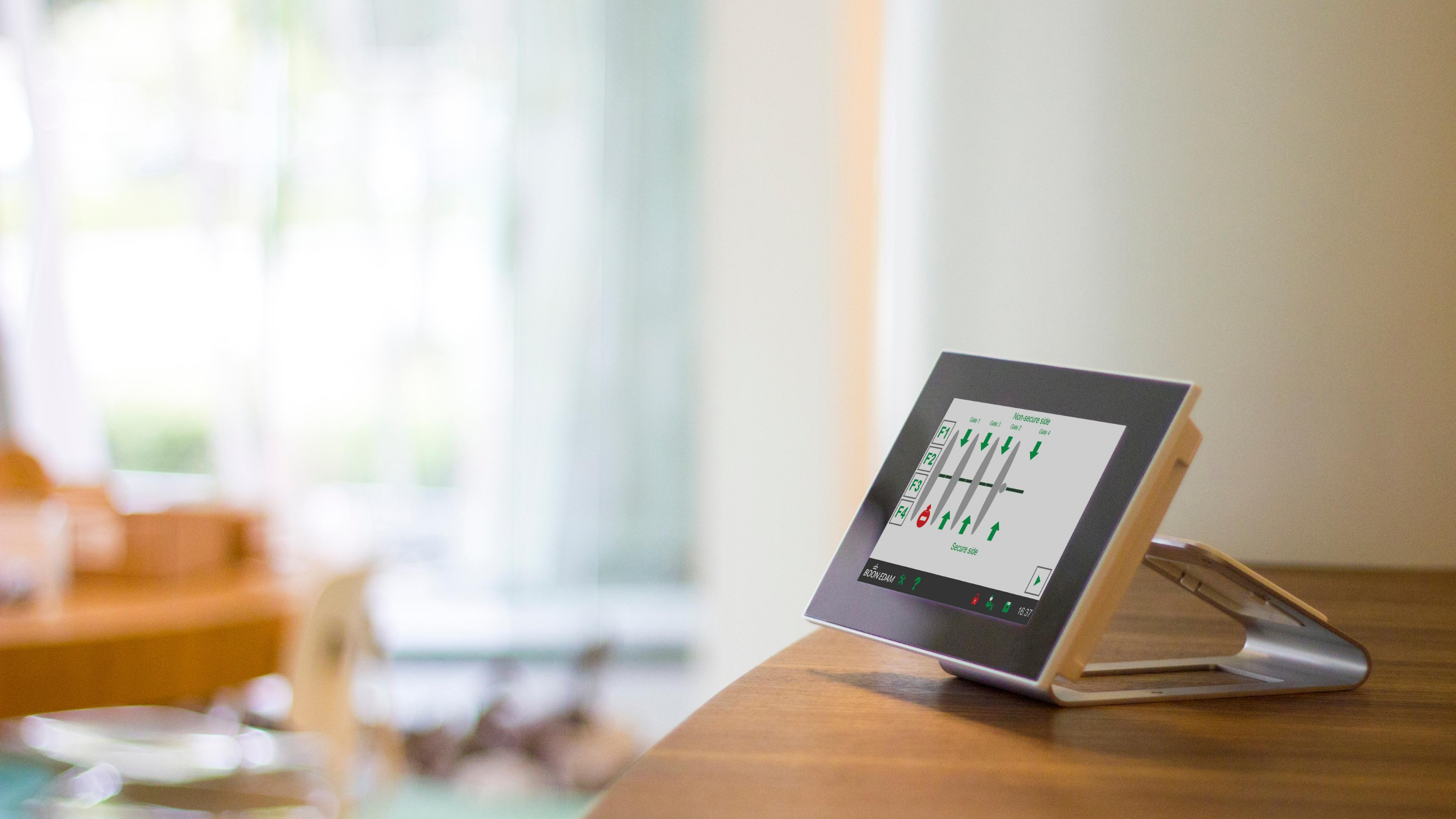BoonTouch Access Control System Panel.
BoonTouch is an access control dashboard designed by Boon Edam to improve the visibility over installed security entrance products. The BoonTouch access control system panel gives you full remote control over entrance products. Perfect for roles that monitor user access into buildings through receptions. The direct connection to the security entrances allows control of both secure and non-secure sides of the security product.
The BoonTouch has a large touchscreen, making it easier to locate alerts such as intruder alarms. It is commonly mounted in a secure location, to make it less like likely to get damaged or misplaced.
Overview BoonTouch Access Control System Panel
The BoonTouch allows receptionists and security guards to easily and quickly grant or deny access to different visitors. They can give a pulse entry from the reception desk to open a security entrance elsewhere in the building. It also gives a quick overview of the status of the security entrances, and has multiple commands:
- Overview of all connected security entrances in the building
- Alarms per security entrance: intruder alarm, power failure (in case of UPS), communication failure, general warnings
- Close all gates command
- Open all gates command
- Day operation command
- Night operation command
- Operating modes per security entrance: locked, optical, unlocked, regular operation
- Side modes per security entrance: pulse entry, free exit (or entrance), blocked
- Inbuilt Alarm and Alert System
BoonTouch is equipped with an inbuilt alarm and alert system, to quickly highlight where in the building a breach has occurred. An intruder alarm will go off when a person without authorization has tried to gain access. The BoonTouch access control system panel will show where in the building the breach occurred.
In optical mode, the security entrances are optically open, but will still show an intruder alarm in case an unauthorized user passes the sensors.
How Does the BoonTouch Panel Work?
BoonTouch allows you to set up different roles and corresponding rights. Admin users have full remote control over all linked entrance products. An admin user can give access to other users such as receptionists. Users can be given different rights regarding product control and login credentials.
The assigned roles can control the security entrances according to their rights. If a breach or unauthorized entry does occur, the security entrances can be locked down to contain the situation. BoonTouch offers different levels of users within the system, to further prevent unauthorized access and usage.
The BoonTouch panel for access control systems is fully language configurable and can link up to 6 security entrances.
The Flexibility of BoonTouch
Buildings are designed to last a lifetime, which is why entry solutions should be too. The BoonTouch access control dashboard is able to manage any changes that may occur. Older entryway solutions can be removed from the BoonTouch control panel to make way for any new systems that are installed in the building. Upgrading and updating security is vital. The BoonTouch access control system panel ensures that this is an easy process for all involved.
Compatible Products
- Tourlock 180
- Tourlock 120A
- Tourlock 120S
- Circlelock Solo
- Circlelock Combi
- Lifeline Speedlane Swing
- Lifeline Speedlane Slide
- Lifeline Speedlane Open
- Speedlane Compact
- Winglock Swing
- Winglock 900
- Twinglock 900
Not All Secured Entry Solutions are Equal
Boon Edam products DETER, DETECT or PREVENT unauthorized entry
When it comes to physical security entrances, there are some different options available to choose from – security revolving doors, security portals, optical turnstiles, full-height and tripod turnstiles. These options vary greatly in their capabilities and can cause confusion. To assist security professionals in selecting the right entrance solution for their unique facility, we have categorized security entrances by their level of security, as it relates to tailgating mitigation. Is the goal tailgating deterrence, detection or complete prevention?

